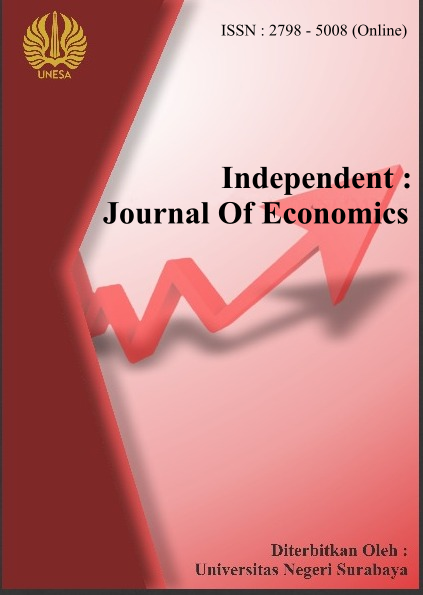Pengaruh Remitansi, Pengeluaran Pemerintah, dan FDI Terhadap PDB per Kapita Indonesia
DOI:
https://doi.org/10.26740/independent.v1i1.38727Keywords:
Remittances, Government Spending, FDI, GDPAbstract
GDP per capita is an indicator to measure the level of welfare in a country. GDP per capita can also be interpreted as the value of goods and services associated with each citizen. Remittances and FDI are the largest foreign funds going into developing countries. In addition, government spending is a fiscal policy in the form of government intervention to address the declining economy. The purpose of this study was to look at the influence of remittances, FDI, and government spending on Indonesia's GDP per capita by using time series data from 1985-2019. OLS (Ordinary Least Square) is an analysis method used in this study. The research results showed that remittances, government spending, and FDI have a positive influence on Indonesia's GDP per capita. Remittances can increase foreign exchange reserves, increase consumption and investment, government management can open jobs and improve the quality of human resources, and FDI can increase the combined supply of financial capital, technology transfer research & development capabilities, marketing methods and management, so that it has a positive effect on Indonesia's GDP
per capita.
Downloads
Downloads
Published
How to Cite
Issue
Section
 Abstract views: 667
,
Abstract views: 667
, PDF Downloads: 871
PDF Downloads: 871








